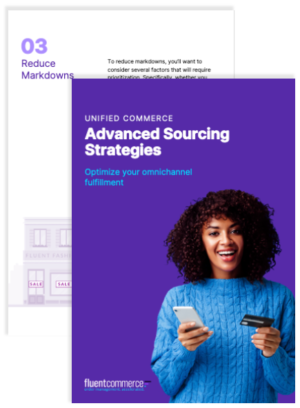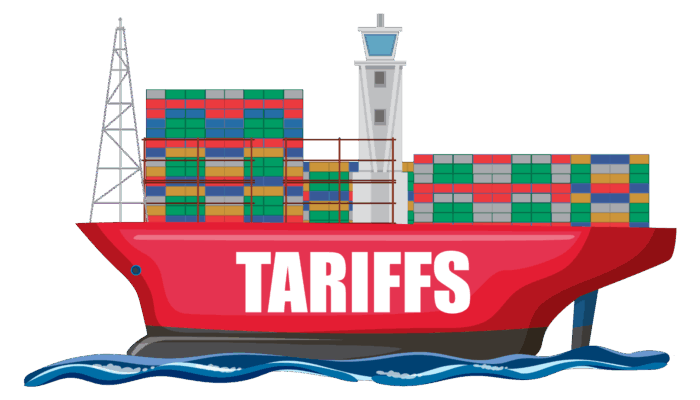Why virtual inventory? Today’s omnichannel retailers sell through more channels than ever. From regional online stores, marketplaces, resellers, mobile apps, in-store kiosks, call centers to social channels. This leads to fulfillment complexity. Why? Because the stock used to fulfill customer orders across those channels may be sourced from a variety of physical supply channels. These include stores, warehouses, drop-ship vendors and 3PLs. So getting the right balance between these online channels and physical supply channels is crucial. Yet it’s something many retailers struggle with. This is where Virtual Inventory comes in.
What is Virtual Inventory?
Virtual Inventory gives retailers new ways to aggregate and segment their stock. It lets them create virtual pools of inventory—defined by inventory rules, buffers and exclusions—and control which inventory pool is used for what purpose, and prioritize inventory by sales channel.
Let’s take a look at some common scenarios where Virtual Inventory can help you adapt to sudden demand, prevent stockouts, and maintain your margins.
Adapt to sudden demand
Say you have a network of stores, a central warehouse and sell online across a dotcom and a marketplace, such as Amazon. You have 1M units of a product across all locations and this is available online on a first-come, first-serve basis.
Now imagine you receive a surge in Amazon orders due to an event like Prime Day. All 1 million units sell out fast. What happens to your own online store customers? They now see no availability because everything was snapped up by your Amazon customers. It’s good to sell out, but leaving the rest of your customers high and dry isn’t. What’s more, if your inventory wasn’t being updated in near-real time, you could also end up overselling and need to cancel orders. But not if you have the right controls in place.
With Virtual Inventory, you have the ability to change what’s Available to Sell in each channel. So you can use inventory rules to cap the stock available to the Amazon channel, and prevent a sellout. That way you can control how inventory is segmented and adjust to seasons or respond to un-forecasted behavior.
Prevent in-store stockouts
Virtual Inventory also helps prevent your in-store customers from experiencing out of stocks. How? By segregating a portion of your inventory for online orders—whether via your own eCommerce store, or a marketplace like Amazon—and reserving the rest for regular in-store traffic. This provides you with stock protection and you can adjust the segregation in the future to meet ad hoc demand, if needed.
Manage pre-orders
Another critical function of Virtual Inventory is to support pre-orders of new products. This is especially relevant for ‘hot items’ such as the latest pair of designer sneakers. Say you have 1M units on order from the manufacturer, and want to let customers place pre-orders a week before the item is physically available in stores. With virtual inventory you can control how many units will be available for preorder, and track how many units are available, sold, reserved, in-flight, or being replenished.
Segment inventory by region
Virtual Inventory—powered by a best-in-class OMS—also lets you segment inventory for different purposes like regional breakdowns. For example, if you’re a luxury retailer that sells in 20 countries, you may want to make 1K units Available to Sell in France, even though those units might be physically located in stores in other countries in Europe.
If you aggregate all of the units across all distribution centers and stores in Europe, and apply a quantity or percentage threshold buffer (to protect the in-store experience), you can make almost all units Available to Sell by sourcing from the store network. What’s more you can configure split shipment rules so that a single order can be sourced from multiple locations if necessary.
Control back-end sourcing
With Virtual Inventory pools that include both ‘owned’ and ‘unowned’ inventory, you can also control sourcing. Say you’re an electronics retailer. While you may have some inventory in stock, you also use your manufacturers as drop ship vendors. For example, let’s say a customer in New York orders a large TV and the closest inventory you ‘owned’ was in California. But you knew the manufacturer had a distribution center in New Jersey. It makes most sense to drop ship the order directly from the manufacturer to the customer. This not only saves on cross country shipping, but the customer gets their order faster too. Virtual Inventory lets you leverage and prioritize all pools of stock, internally or via third party drop ship vendors, to ensure optimal fulfillment.
Add agility to your inventory
If waves of Covid lockdowns and restrictions have taught us anything, it’s that retailers need the ability to react quickly. How quickly can you remove locked down stores from your Click and Collect or Buy Online Pickup In-Store locations? Or turn them into dark stores or curbside pickup locations? Many of our clients have made these changes in record time.
With a platform like Fluent Order Management, this can be done in days rather than weeks or months. One client event stood up Ship from Store in 5 days. This meant store stock that might have otherwise been unsold, could be used to fulfill online orders. Virtual catalogs were updated, and new ones spun up quickly as teams adjusted to the evolving retail landscape. So if your order or inventory management system doesn’t provide you with flexible control over your inventory, it might be time to consider something new. Because “change is the only constant in life” (Heraclitus), now more than ever.




